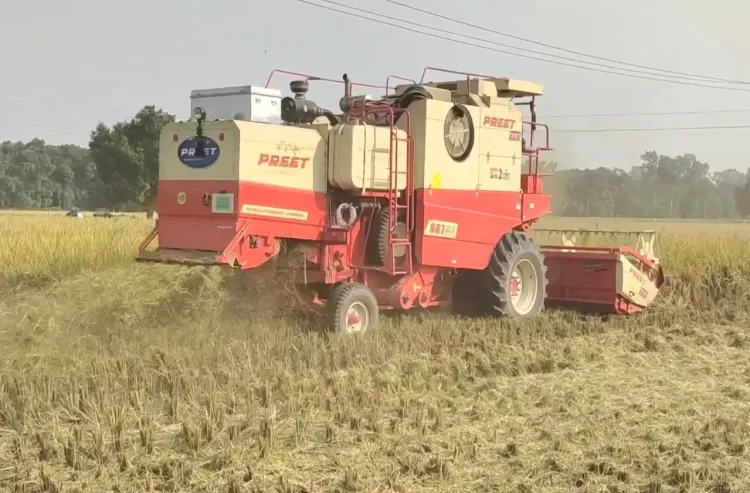How Are Farmers in Karnal Adopting New Stubble Management Techniques?

Synopsis
Key Takeaways
- Karnal farmers are shifting towards sustainable stubble management.
- Stubble burning is being replaced by environmentally friendly practices.
- Government support includes subsidies for machinery and incentives for non-burning practices.
- In-situ and Ex-situ management are effective techniques being promoted.
- Enhanced soil fertility leads to improved crop yields.
Karnal, Oct 16 (NationPress) Farmers in Karnal, Haryana, are progressively adopting cutting-edge stubble management strategies. This transition signifies a major advancement away from the detrimental habit of burning crop residue after harvest.
This development is a considerable boon for both the environment and public health. Previously, stubble burning was infamous for generating significant air pollution and dense smog during the harvest season.
This year, the improvement is evident. Locals report that there have been no occurrences of stubble burning or smoke clouds following the harvest, owing to the implementation of modern crop residue management techniques by local farmers. Not only does this initiative benefit the environment, but it also improves soil fertility, greatly energizing the farming community.
“In the past, farmers burned stubble out of necessity, but we are now aware of the harmful repercussions. We must safeguard future generations,” remarked Raj Kumar Maratha, a farmer from Jhanjhri village in Karnal.
Raj Kumar has effectively managed stubble on his 10-acre field using a state-of-the-art Combine Harvester equipped with SMS technology. This advanced machine finely chops the paddy stubble, which is subsequently mixed into the soil with the assistance of a cultivator, thus preparing the field right away for the next crop.
“This method is highly effective and farmer-friendly,” Raj Kumar stated. “Although it incurs an additional cost of about Rs 400, it resolves the stubble issue, avoids environmental harm, and boosts the soil’s fertility. The stubble decomposes in the soil and serves as a natural fertilizer, enhancing crop yields.”
Another local farmer, Sunil Kumar, shared this optimistic viewpoint, encouraging fellow farmers to abandon stubble burning in favor of residue management techniques that are advantageous for both their land and health.
Dr. Wazir Singh, Deputy Director of Agriculture in Karnal, underscored the government's continuous efforts to advocate for stubble management. He noted that approximately 60% of the paddy harvest has been completed in the district, with nearly 40% of farmers adopting residue management practices.
“The Agriculture Department is executing various awareness initiatives at district and block levels to motivate farmers to manage stubble rather than burn it,” Dr. Singh stated.
“Over 400 teams have been established by the district administration to educate farmers on this matter. A 50% subsidy is available on agricultural machinery to aid residue management.”
Farmers who avoid burning stubble are also eligible for a subsidy of Rs 1200 per acre as an incentive. Dr. Singh elaborated on two primary stubble management methods being promoted:
In-situ Management: Directly incorporating the stubble into the fields to enhance soil nutrients.
Ex-situ Management: Removing the stubble from the fields and managing it externally.
Farmers are encouraged to utilize SMS-enabled combine harvesters for improved efficiency during the paddy harvest.









